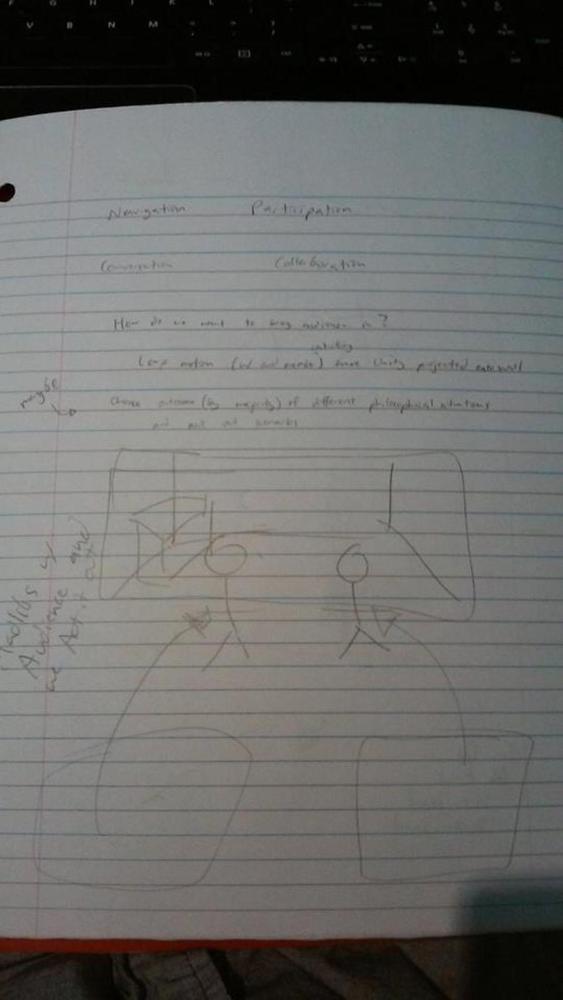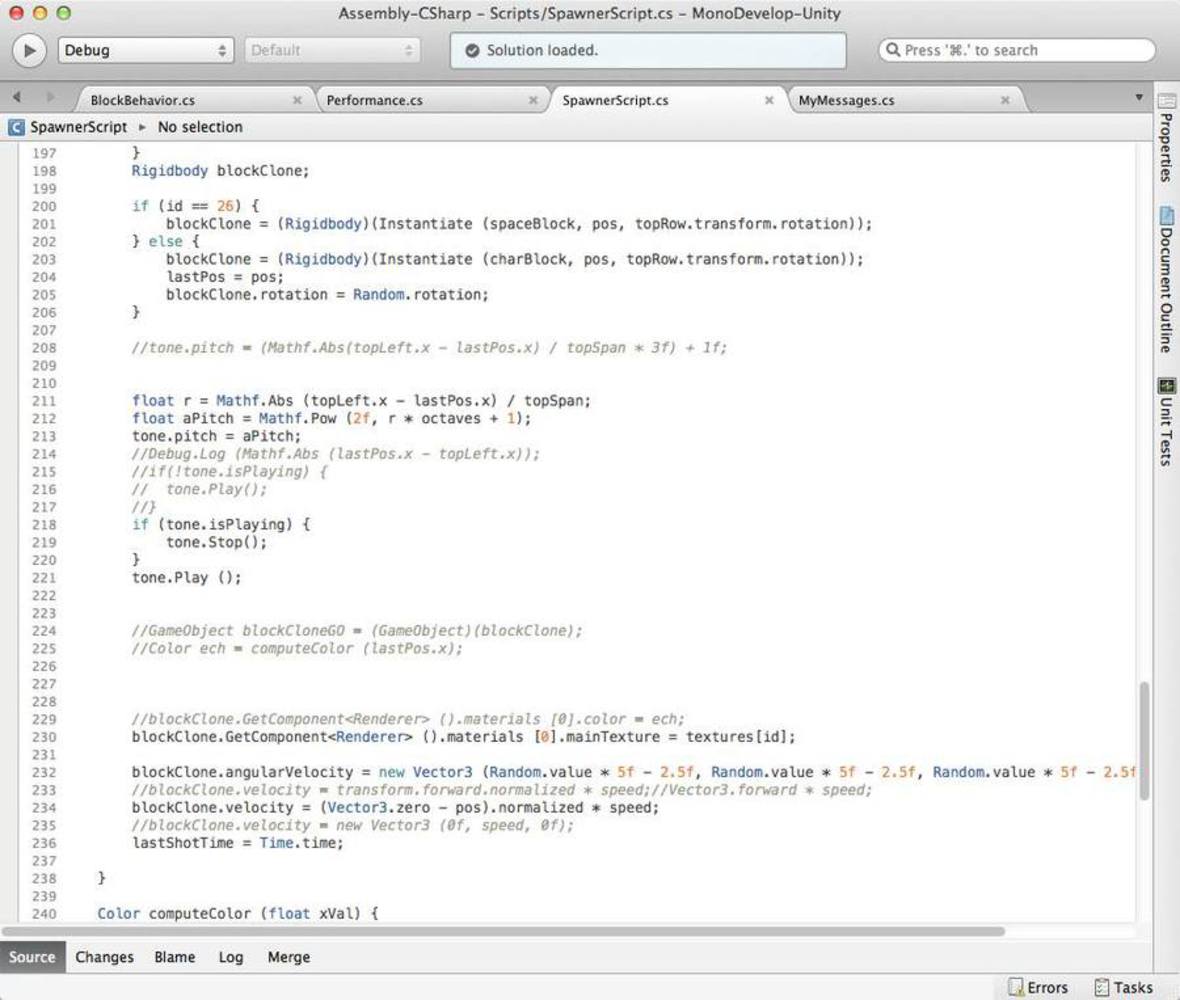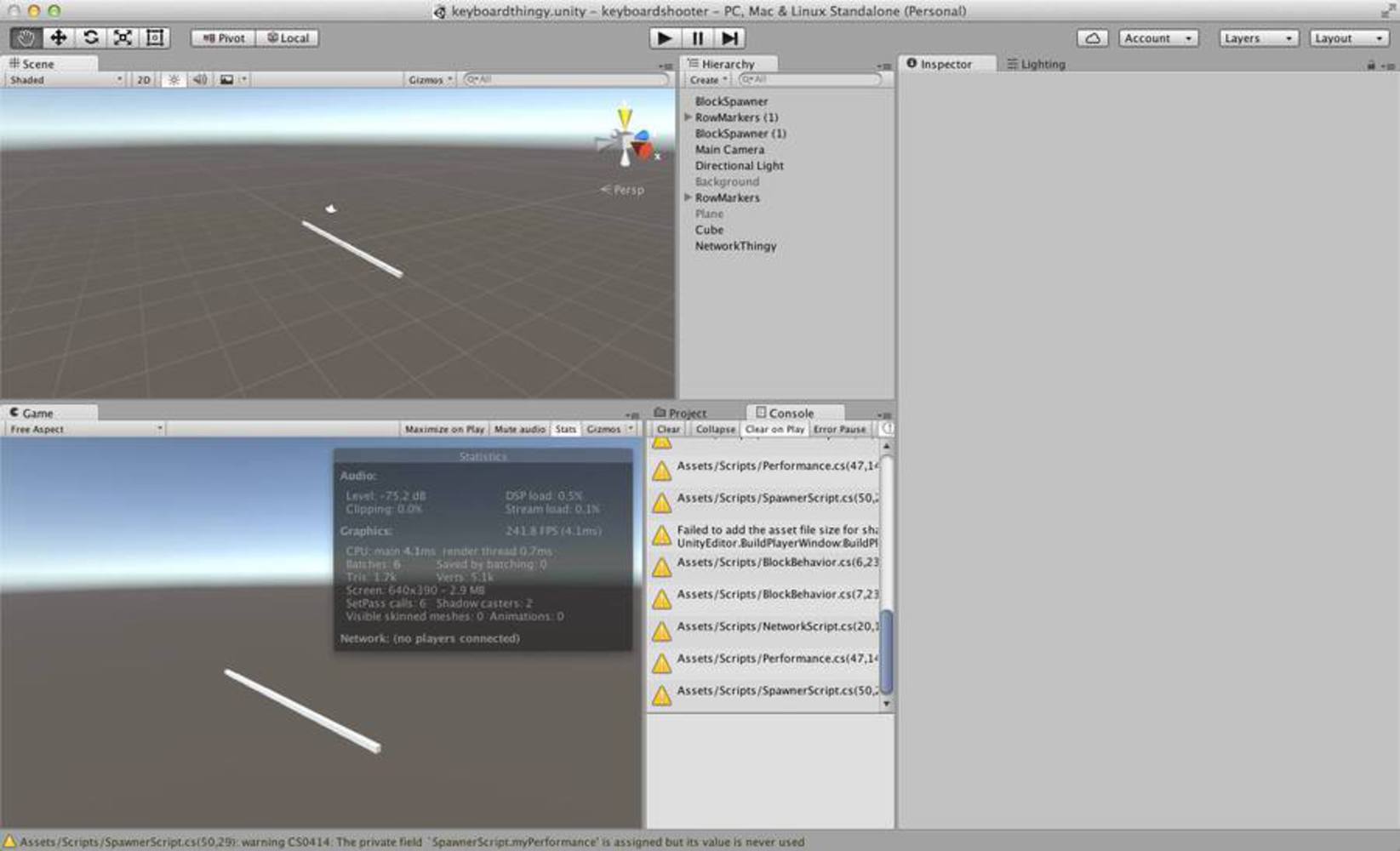Reflection
Reflect on the process of making this project. What did you learn? What would you do differently? What does your inner critic say about this work?
Overall we learned how difficult it was to remain true to core concepts and mesh them all into one cohesive work. Instead of being afterthoughts or unnecessary features, we had to meld performance and technology to create a unique and interesting presentation. Towards the beginning, we weren't able to all meet up at the same time due to some having exams and such. But we did find a run of a few days where we were all able to congregate and push out ideas and refinements. We worked well together and built off of each other's suggestions and ideas, whether they were good, bad, or completely different.
One of the biggest challenges was in determining what was nice to have and what was necessary to have. Some ideas would have been awesome to implement, but they were out of the scope of what we could pull off in time or they weren't quite relevant to what we were doing.
Something that we could have done differently was to assign roles right away. We sort of eased our way into them according to our strengths, but specifying what they were early on would have allowed us to hit the ground running and get things done a little sooner.
Our inner critic told us that we could have done better with the presentation in terms of organization. We neglected to rehearse our intro and so the concept of our presentation might not have gotten across to people immediately. Overall, though, we think it was very well received by the audience. There were many people laughing at the silliness of the game and story and there were others mentioning how cool the visual aspect of it was. A lot of hard work was put into it (Dominic even pulled an all-nighter to work on making the features better) and it showed. Our project turned out to be a success!


